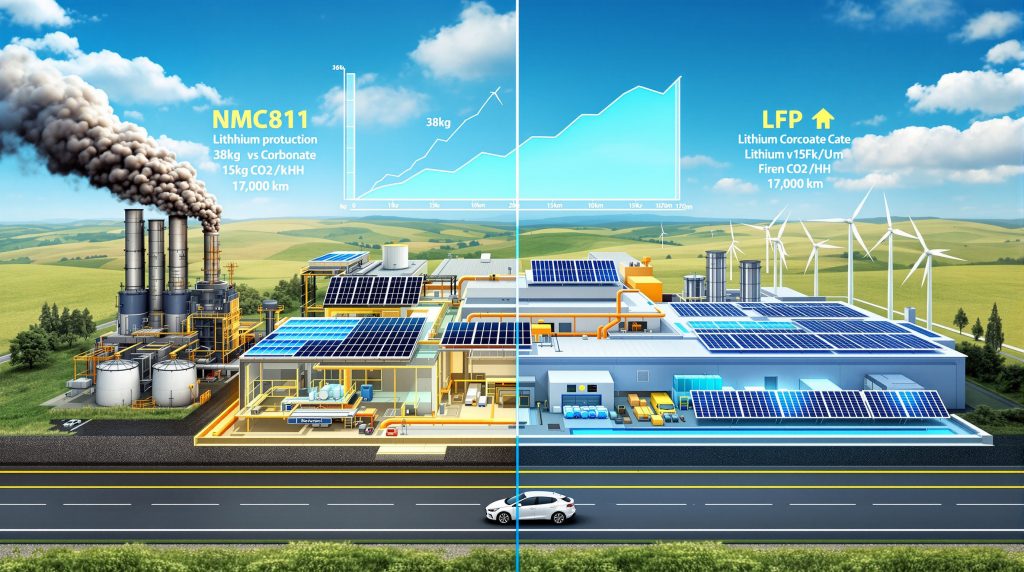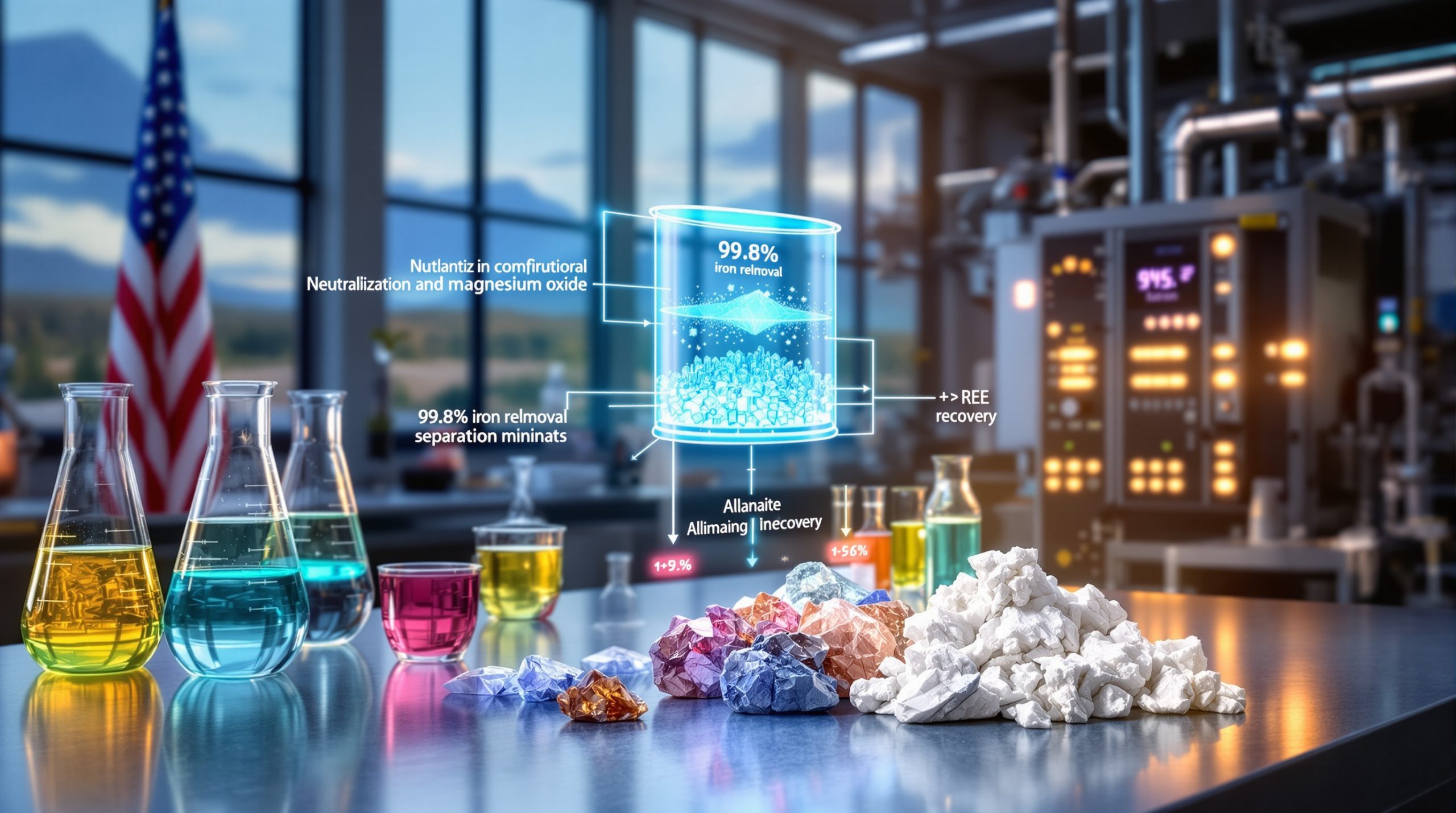The Carbon Footprint of Battery Production: A Comprehensive Analysis
The environmental impact of battery manufacturing has become a critical consideration in the clean energy transition. As electric vehicles and grid storage systems gain market share, understanding the carbon implications of battery production grows increasingly important. While batteries enable significant emissions reductions during operation, their manufacturing process carries an environmental "backpack" that must be properly accounted for in sustainability assessments.
Current industry analysis places the carbon footprint of lithium-ion battery production between 40-100 kg CO2e/kWh, with significant variation based on chemistry, manufacturing location, and energy sources. Leading manufacturers implementing best practices can achieve approximately 55 kg CO2e/kWh, with potential to reduce this to around 20 kg CO2e/kWh through comprehensive optimization.
What Factors Contribute to Battery Production Emissions?
The environmental impact of battery manufacturing stems from multiple sources across a complex global supply chain. Understanding these contributors is essential for identifying the most effective emission reduction strategies.
Raw Material Sourcing and Processing
Battery production begins with raw material extraction and processing, which accounts for a significant portion of the total carbon footprint. The environmental impact varies substantially based on:
- Mining methods and locations: Open-pit mining typically generates more emissions than underground operations
- Processing techniques: Energy-intensive refining processes contribute significantly to emissions
- Transportation requirements: Emissions from moving materials across global supply chains
- Energy sources: Grid carbon intensity at processing facilities dramatically affects overall impact
Different battery chemistries require distinct raw materials, each with its own carbon intensity. For example, lithium extraction methods vary dramatically in their environmental impact depending on whether the lithium comes from hard rock mining or brine operations.
Lithium from Australian spodumene requires energy-intensive conversion to lithium hydroxide, while South American brine operations producing lithium carbonate often utilize solar energy for evaporation, resulting in lower emissions. This distinction becomes particularly important when comparing NMC batteries (requiring lithium hydroxide) to LFP batteries (which can use lithium carbonate).
How Do Different Battery Chemistries Compare in CO2 Emissions?
Battery chemistry selection represents one of the most impactful decisions affecting the carbon footprint of production. The materials used in cathodes, anodes, and electrolytes directly influence both production emissions and performance characteristics.
NMC811 vs. LFP: A Carbon Comparison
Recent analysis reveals striking differences between two leading battery chemistries:
| Battery Chemistry | CO2e per kWh | CO2e per kg of cathode material | Primary Raw Materials |
|---|---|---|---|
| NMC811 | 38 kg | 28 kg | Lithium hydroxide, nickel, manganese, cobalt |
| LFP | 15 kg | 7.5 kg | Lithium carbonate, iron phosphate |
The data demonstrates that LFP batteries produce approximately 60% lower emissions at the cathode material level compared to NMC811 batteries. However, when considering the complete cell level, the higher energy density of NMC811 distributes the impact of non-cathode components across more stored energy, potentially resulting in lower overall emissions per kWh.
Supply Chain Complexity and Emissions
The emissions profile of different chemistries is heavily influenced by their supply chain requirements:
- NMC811 supply chain: Requires lithium hydroxide from Australia, cobalt from Congo, nickel from Australia, and manganese from southern China
- LFP supply chain: Primarily uses lithium carbonate from Chile and iron phosphate from China
- Transportation emissions: The greater geographic dispersion of NMC materials adds to the carbon footprint
- Processing energy intensity: Nickel and cobalt refining are particularly energy-intensive processes
The energy sources used in material processing significantly impact emissions. For example, lithium carbonate extraction in South America often utilizes solar energy, while lithium hydroxide production from hard rock requires more energy-intensive processing.
What Manufacturing Processes Generate the Most Emissions?
Battery production involves multiple energy-intensive manufacturing stages that contribute significantly to the overall carbon footprint. Understanding which processes generate the most emissions helps target reduction efforts more effectively.
Cell Manufacturing Energy Requirements
The cell manufacturing process is particularly energy-intensive, with several key contributors:
- Electrode coating: Conventional wet coating processes require substantial energy for drying and solvent recovery
- Clean room operations: Maintaining precise environmental conditions demands continuous energy input
- Cell formation: The initial charging and testing processes consume significant electricity
- Assembly automation: Advanced manufacturing equipment requires continuous power
Research indicates that energy consumption per watt-hour decreases with production scale, meaning larger gigafactories tend to be more energy-efficient per unit of output than smaller facilities. This scale advantage applies both to electricity usage and material efficiency, as larger operations typically generate less waste per cell produced.
Wet vs. Dry Coating: Environmental Tradeoffs
Modern manufacturing techniques offer potential emissions reductions:
| Manufacturing Approach | Energy Consumption | Process Benefits | Carbon Considerations |
|---|---|---|---|
| Conventional Wet Coating | Higher | Established technology | High energy for drying, solvent recovery |
| Dry Coating | Up to 50% lower | No drying ovens required | May use PTFE binders with high GWP |
While dry coating significantly reduces energy consumption, some implementations use PTFE binders with a greenhouse warming potential approximately 12,000 times higher than CO2, potentially offsetting energy savings by increasing the product carbon footprint by up to 5%.
This tradeoff illustrates the importance of comprehensive carbon accounting across all manufacturing inputs rather than focusing solely on energy consumption. Next-generation dry coating processes using alternative binders could potentially overcome this limitation.
Can Renewable Energy Transform Battery Production Emissions?
The energy source used throughout the battery production process represents one of the most significant opportunities for emissions reduction. Battery manufacturing facilities typically consume between 50-70 kWh of electricity per kWh of battery capacity produced, making energy sourcing a critical factor in overall emissions.
Potential Emissions Reductions Through Clean Energy
Industry analysis suggests substantial carbon reductions are possible through renewable energy transformations:
- Cathode material production: Full renewable energy implementation could reduce emissions by 37% for NMC811 and 33% for LFP cathodes
- Cell manufacturing: Converting production facilities to renewable energy represents the single most impactful intervention for reducing manufacturing emissions
- Supply chain decarbonization: Implementing clean energy across upstream processes could reduce NMC811's product carbon footprint by an additional 38%
- Combined potential: Total emissions could decrease from approximately 55 kg CO2e/kWh to around 20 kg CO2e/kWh
Several battery manufacturers have already begun integrating renewable energy into their production facilities. For example, Northvolt's gigafactory in Sweden utilizes hydropower, while Tesla's Nevada facility incorporates solar energy. These implementations demonstrate the feasibility of low-carbon battery manufacturing when paired with appropriate energy sources.
"The energy source used for battery manufacturing can have a greater impact on lifecycle emissions than the choice of battery chemistry itself." – Battery technology research consortium statement
When combined with process optimizations, renewable energy integration represents the clearest path toward dramatically reducing how much CO2 does battery production really emit.
What is the Carbon Payback Period for Electric Vehicle Batteries?
The "CO2 backpack" of electric vehicle batteries is quickly offset during vehicle operation due to the efficiency advantages of electric powertrains. Understanding this breakeven point helps contextualize the upfront emissions investment of battery production.
EV Emissions Breakeven Points
Recent lifecycle analyses provide concrete figures on when EVs overcome their initial carbon disadvantage:
- Average market-wide breakeven: Approximately 17,000 kilometers (based on ICCT analysis)
- Model-specific example: The BMW iX3 50 xDrive reaches lower lifetime emissions than comparable combustion models after approximately 21,500 kilometers when charged using the European electricity mix
- Renewable charging impact: When charged exclusively with renewable electricity, the breakeven point improves to approximately 17,500 kilometers
- Grid carbon intensity effect: Regions with cleaner electricity achieve faster breakeven points
These figures represent total vehicle lifecycle emissions, including the battery, demonstrating that despite higher production emissions, EVs quickly establish a climate advantage through cleaner operation.
Battery size significantly affects this calculation—larger batteries carry higher production emissions but enable longer electric driving ranges. Optimizing battery capacity based on typical driving patterns can help minimize the carbon payback period while ensuring sufficient range for most users.
How Does Production Equipment Contribute to Battery Carbon Footprint?
The manufacturing machinery itself represents a previously under-examined contributor to battery production emissions. While often overlooked in carbon accounting, the environmental impact of production equipment can be significant when evaluated across a facility's operational lifespan.
Carbon Impact of Production Machinery
Analysis of a typical coating line for battery production reveals:
- Total machinery footprint: Approximately 65 tonnes CO2e for a machine processing 700mm wide foil at 50m/min with 2.2 GWh annual output
- Key contributors: Electronics, drying housing components, and rollers (often made from aluminum or chrome-plated steel)
- Material selection impact: Using recycled materials could reduce machinery emissions by at least 30%
- Equipment lifespan effect: Longer operational periods distribute embedded carbon across more production output
When calculated across an entire 2.2 GWh production line over an eight-year operational period, the machinery itself contributes approximately 0.2 kg CO2e/kWh to the battery's carbon footprint—relatively minor compared to material and energy inputs but still significant for comprehensive carbon accounting.
This analysis highlights the importance of considering all emissions sources in lifecycle assessments, including often-overlooked categories like production equipment. As the industry advances toward lower-carbon operations, even these smaller contributors will become increasingly important to address.
What Role Does Battery Recycling Play in Reducing Emissions?
End-of-life processing represents both a challenge and opportunity for further reducing the lifecycle carbon footprint of batteries. As the first generation of large-format EV batteries reaches end-of-life, recycling systems are scaling up to recover valuable materials and reduce environmental impact.
Recycling Processes and Carbon Implications
The emissions profile of battery recycling varies significantly based on the specific processes employed:
| Recycling Approach | CO2e per kg Recycled | Recovery Rate | Process Description |
|---|---|---|---|
| Mechanical Pre-processing with Hydrometallurgical Treatment | 3.6 kg | 70% | Physical separation followed by chemical extraction |
| Pyrometallurgical with Hydrometallurgical Treatment | 12.8 kg | 25% | High-temperature smelting followed by chemical extraction |
While recycling itself generates emissions, recovering critical materials significantly reduces the need for virgin material extraction, potentially creating substantial net carbon benefits for future battery production.
Battery design decisions made today significantly impact future recyclability. Some manufacturers are adopting "design for recycling" approaches that facilitate easier disassembly and material recovery, potentially reducing the energy required for recycling processes.
"Recycled battery materials can reduce the carbon footprint of new batteries by up to 40% compared to virgin material extraction, particularly for metals like nickel and cobalt." – European battery recycling initiative report
As battery volumes continue to increase, developing efficient battery recycling breakthrough technologies will become increasingly critical for both environmental sustainability and resource security. Furthermore, companies like Panasonic closed-loop recycling systems are demonstrating the commercial viability of comprehensive battery material recovery.
How Can the Battery Industry Achieve Carbon Neutrality?
Achieving a sustainable battery value chain requires coordinated action across multiple dimensions. The industry faces both challenges and opportunities in its path toward carbon neutrality.
Key Strategies for Emissions Reduction
Industry leaders are pursuing several parallel approaches to minimize how much CO2 does battery production really emit:
- Enhanced supply chain transparency: Implementing digital tracking systems like the battery passport to identify and optimize high-emission processes
- Chemistry innovation: Developing lower-carbon alternatives such as sodium-ion and solid-state technologies
- Manufacturing efficiency: Scaling production while implementing energy-efficient processes
- Circular economy integration: Designing batteries for easier disassembly and more efficient recycling
- Renewable energy deployment: Converting production facilities to clean energy sources
The combined effect of these interventions could potentially transform battery production from a carbon-intensive process to a sustainable cornerstone of the clean energy transition.
Regulatory frameworks like the European Battery Regulation are beginning to mandate carbon disclosure and set maximum emissions thresholds, accelerating industry transformation toward lower-carbon practices. These policies create market incentives for manufacturers to implement emissions reduction strategies throughout their supply chains.
Frequently Asked Questions About Battery Production Emissions
What is the current average carbon footprint of EV battery production?
Current industry estimates place the carbon footprint of lithium-ion battery production between 40-100 kg CO2e/kWh, with significant variation based on chemistry, manufacturing location, and energy sources. Leading manufacturers implementing best practices can achieve approximately 55 kg CO2e/kWh, with potential to reduce this to around 20 kg CO2e/kWh through comprehensive optimization.
The wide range reflects differences in manufacturing efficiency, material sourcing practices, and electricity grid carbon intensity across production regions. As the industry matures, increasing standardization of carbon accounting methodologies will enable more precise comparisons between manufacturers.
How does battery size affect the environmental impact of an electric vehicle?
Battery size directly impacts an EV's production emissions and breakeven point. Larger batteries contain more materials and require more energy to manufacture, increasing the initial "CO2 backpack." However, they also enable longer electric driving ranges, potentially displacing more fossil fuel consumption over the vehicle's lifetime.
The optimal battery size balances production emissions against operational benefits based on expected usage patterns. For urban drivers with access to regular charging, smaller batteries may offer better overall environmental performance, while longer-distance drivers may achieve lower lifetime emissions with larger batteries despite higher initial production impacts.
How will future battery technologies affect production emissions?
Emerging technologies like solid-state batteries, sodium-ion batteries, and lithium-sulfur cells promise to reduce production emissions through simplified manufacturing, reduced critical material requirements, and potentially lower energy-intensive processing.
Solid-state batteries may eliminate the need for certain energy-intensive production steps while potentially increasing energy density, improving both manufacturing emissions and operational efficiency. Sodium-ion batteries substitute abundant sodium for lithium, potentially reducing supply chain emissions and material costs.
However, these benefits must be verified through comprehensive lifecycle assessment as these technologies reach commercial scale. New manufacturing processes may introduce unforeseen environmental challenges that require careful evaluation before large-scale deployment. Additionally, the development of a battery-grade lithium refinery with efficient processes can provide significant decarbonisation benefits throughout the battery value chain.
Ready to Invest in Greener Battery Solutions?
Discover the latest ASX opportunities in low-carbon battery technology with Discovery Alert's proprietary Discovery IQ model, delivering real-time notifications on breakthrough developments in sustainable battery production. Explore why major mineral discoveries can lead to significant market returns by visiting our dedicated discoveries page and begin your 30-day free trial today.




